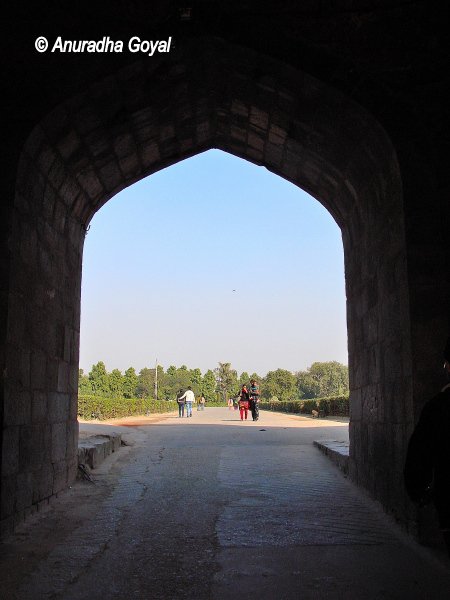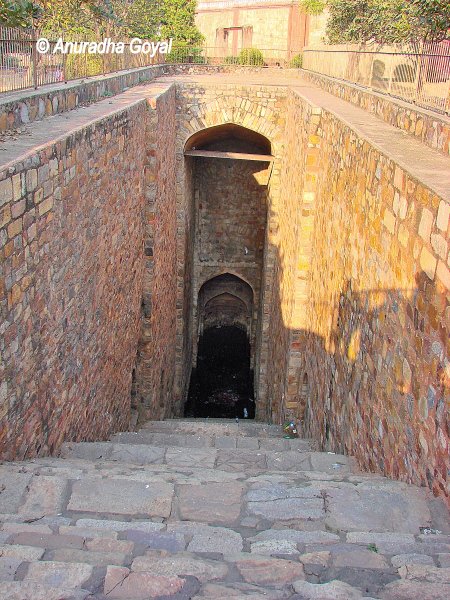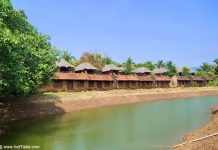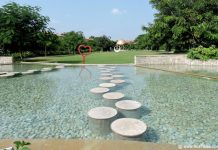Purana Qila in the heart of Delhi is a unique monument. Standing on the banks of Yamuna, it contains within it the mythology and the stories of the medieval era. And an excavation that is giving us insights into our past. Today, it has also become a favorite place for events and performances. The scattered monuments provide a romantic backdrop. The vast size provides the required space for large gatherings. And central location provides much-needed convenience.

Purana Qila – Places to visit in Delhi
The beginnings of Purana Qila lie in the mythology or the most ancient history known, as you would like to believe. This was the legendary city called Indraprastha founded by Pandavas in pre-historic times. This is where the famous assembly hall of Mahabharata created by the Maya was. Though there is no archeological evidence that supports this today. The only oral evidence is the fact that in the recent past, there was a village by the same name that used to inhabit this area.
Fort
The better-known part of the history of this fort is its construction by the Mughal emperor Humayun as a citadel for the city founded by him Din-a-Panah in 1538 CE. It was soon captured by Sher Shah Suri of the Sur dynasty and was renamed Shergarh. He also added some buildings to the fort during his short reign of 5 years from here. After Sher Shah, this fort remained neglected for some years. Before being re-captured by Humayun, who died within a year of capturing it. The last Hindu King Hemu ruled for about a month from this fort.
If you look at the pattern, no one actually ruled very long from this mighty fort. Anyone who captured this was killed very soon. This complex also served as a refugee camp for people displaced during the partition of the nation.
Interestingly the British-designed New Delhi is aligned along Purana Qila.

3 Gates of Purana Qila Fort
There are 3 gates to this fort and a huge moat surrounds it, which is now used for boating. The Bara Darwaza, facing west and flanked by two huge bastions is the main entrance to the fort. The southern gate facing Humayun’s tomb is called by the same name Humayun Darwaza. The third gate facing North is interestingly called Talaqi Darwaza and is closed permanently owing to a story.
A story says that a king went out from this gate and this gate was to be opened only when he returned victoriously. Since he did not return this gate remains closed to this date. No one knows who the king was, but the only king who could have been being Sher Shah.
All these gateways are an example of Indo-Islamic architecture. Adorned with beautiful Rajputana style Chhatri’s that are decorated with blue inlay tiles.

Qila-e-Kohna Mosque
The Qila-e-Kohna mosque and Sher Mandal are two monuments that are well preserved within the Puran Qila complex. Qila-e-Kohna mosque designed as a Jami or Friday mosque is a beautiful example of Indo-Islamic architecture style. Built by Sher Shah Suri, this mosque with one dome and 5 gateways has extensive ornamentation, especially on its mihrabs. Walls have geometrical designs in red, black, and white marble done skillfully through inlay work.
The inside of the dome has a nice play of bright blue and yellow colors through glazed tiles. The pointed arches are horseshoe-shaped. The corner pillars at the back of the mosque if looked at in isolation would give a feeling of a Rajputana building in red sandstone with well-defined Chhajjas and beam and lintel arches.
A staircase from within the hall leads to the upper story that was meant for the females of the royal family. There is an interesting water body in the courtyard outside the mosque, which would have been used for Wuzu purposes when the mosque was practicing.

Sher Mandal
The Sher Mandal is an independently standing double-storeyed octagonal structure in red sandstone with a Chhatri on its top. This structure was built as a pleasure resort by Sher Shah to enjoy the weather and a good view. It is said that it was intended to be higher than this and was planned as an observatory. But could not be completed because of Sher Shah’s death. Later when Humayun took over, he converted it into a library. And one fine January morning he died on the stairs of this building as he tried rushing to the call to prayer from the mosque.

ASI Museum
All of the above is more or less commonly known. The not-so-well-known things are the ASI museum. It traces the history of Delhi through the articles discovered through various excavations in different parts of the Delhi region including this one. Here you can see the ornate doorways of ancient Jain temples from the Mehrauli area. Along with potteries of various eras discovered from the different layers of the Yamuna riverbed.
Stepwell & Hamam
Then there are two small but interesting excavated sites within the complex. One is a step well, which has many stories and is in an elongated rectangular form, with arches on one side. The steps seem to have been recently restored. The other is a Hamam or a bathing place. Which seems like a complex structure and has various places where water can flow from one place to another. I tried but could not make out the exact functioning of this Hamam.

Kunti Devi Temple
Another interesting thing to see is the Kunti Devi temple, right in the middle of the complex. It is a small temple dedicated to Shiva. It is said that this is a temple from the time of the Pandavas. And probably belonged to their mother Kunti as it is still known by her name. It is a small temple with nothing much to note except its historical reference. There are two Bhairon temples just outside the Qila complex, adjoining its back wall.
Both these temples are said to have been set up by Pandavas when they had made their capital here. In fact, one of the temples has an idol of Bhima. One of the Pandava brothers is said to have carried Bhairon on his shoulders to this place, before building the temple.
Interestingly alcohol is the preferred prasad or offering for this deity. All the beggars gather around to receive the prasad for obvious reasons. The government has a tough time controlling the crowd here, especially on Sundays.

Fort Walls
You can walk around the Qila along its thick and seemingly impregnable walls. The walls also served as quarters for the soldiers and guards. Today these are home to ASI offices and the ASI museum. Most walls are in a dilapidated state. Those that are standing erect, have been restored by ASI not so long ago. The same is true for the two unused gateways. If possible, try and walk on the walls of the Qila to get a view from the top. And from here Delhi does seem a beautiful city.

Khairul Manzil Mosque
Bang opposite Purana Qila, across the Mathura road, is Khairul Manzil mosque. The name literally means the best or most auspicious of the houses. The name is also a chronogram which means the letters when written in Persian refer to the year of its construction. Built-in 1561 CE, this mosque belonged to Maham Anga, the wet nurse of Akbar and Adham Khan’s mother. It is a relatively plain mosque when compared to the Qila-i-Kohna mosque. But, has an impressive gateway and is fairly large in size. The glazed tile ornamentation on arches has more or less worn out. It also houses a madrasa or a school.

Sher Darwaza or Lal Darwaza
Just ahead of Khairul Manzil mosque is the Sher Darwaza more often known as Lal Darwaza, built by Sher Shah Suri. This is an impressive gateway built in red sandstone, quartzite, and marble with the remains of a massive wall behind it. There are ruined shops on both sides of the pathway leading to the gateway. This was one of the gates to Delhi Sher Shahi. Its northern gate is near Feroze Shah Kotla was known as Khuni Darwaza.

To complete this walk you can also visit the Delhi Zoo. It was inherently a part of this Qila and take a boat ride in the small lake outside Qila Walls. On a good weather day, you can enjoy the extensive gardens here.
There is something for everyone in this walk.
Recommend you to read the following Places to visit in Delhi.













Really a very interesting story on purana quila. I had been staying in delhi since many years but I didnot know that. delhi is rich in heritage. There are many other hitorical places.
Anuradha Goyal,
Really, your presentation on Purana Qila is so beautiful and well explained that I was wonderful with that.
I visited India last winter there and spent 4 days in Delhi but I only saw Purana Qila outside, because I was travelling in a pre-programmed way, but next time in Delhi I will not loose to visit this very important ancient and full historic site.
ADEMAR ARAUJO FROM BRAZIL
Anuradha, I cam across this Blog of yours just today while surfing around for something altogether different, the Street food of Delhi. Boy! Am I happy I stumbled in here! I like the way you have painstakingly researched and photographed the monuments and wrote about them with a passion and love rarely seen. Great work. keep it up.